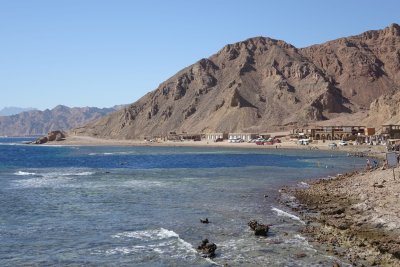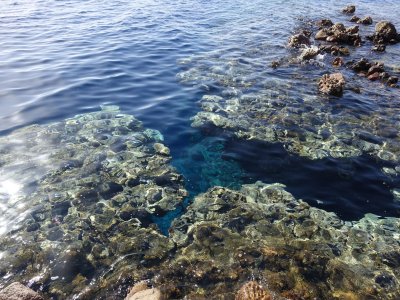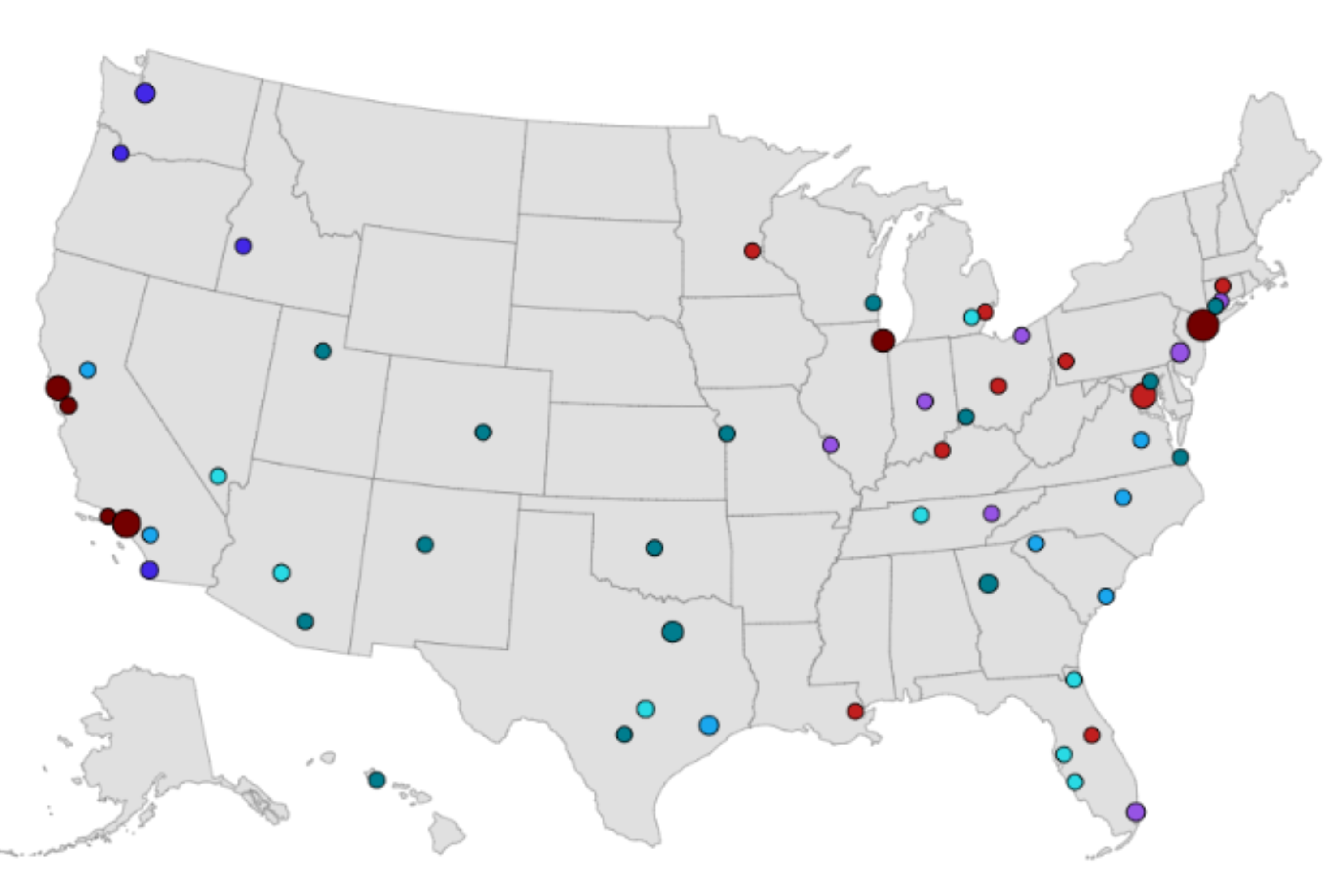New Netflix documentary The Deepest Breath has retold the story of freediver Stephen Keenan who helped his partner, Alessia Zecchini, attempt one of the world's most infamous dives using only one breath.
The Blue Hole, a 330-foot marine sinkhole in the Red Sea near Dahab in Egypt, is thought to have claimed the lives of about 200 divers.
During the film, it was suggested that the dangers of this dive site were greater than those faced by mountaineers climbing Mount Everest.

The Claim
During the 2023 Netflix documentary The Deepest Breath, William Trubridge, a freediving world-record holder, said: "In terms of fatalities the Blue Hole is even more perilous than Mount Everest."
Trubridge added: "As well as myself, there have only been a handful of people who have freedived through it."
The Facts
Blue Hole is about 260 feet in diameter. Its walls are funnel-shaped, with an opening at a depth of about 170 feet. At this point, an arch opens up to a sloping tunnel that leads to the open sea. The inside of Blue Hole is about 330 feet deep.
The Deepest Breath documentary explores both the dangers of the Blue Hole and freediving, an extreme sport involving diving underwater without breathing equipment.
The dangers of freediving the Blue Hole have been known for some time.
Diver Dominik Černý told Newsweek in 2022: "Freedivers...just go over their limit and faint, but with scuba divers, it usually starts with oxygen poisoning or nitrogen narcosis caused by such depth they are not equipped and don't have proper training for."
He added that at the depth of the arch, divers can be confused and stop being cautious, resulting in them running out of air or having seizures.
There is no public record of the number of deaths at Blue Hole.
An estimated 200 deaths have occurred there in recent years, according to several media reports including a 2017 report by The Guardian. A 2014 article by Slate reported that an estimated 130 people had died there "within the last 15 years."
So, how does that compare to the number of people who have died climbing Mount Everest?


More than 300 people are thought to have died on Everest with about 200 bodies remaining on the mountain due to the difficulty in recovering them.
Statistics website Statista reports that from 2012 to 2022, 81 expedition members and employed personnel had died trying to climb the 29,029-foot-high mountain.
In 2016, the British Mountaineering Council, the national representative body for hill walkers, climbers, and mountaineers in England and Wales, stated that between 1922 and 2014, 265 people had died on Everest.
Although Newsweek was unable to find a primary source that stated how long divers had been visiting Blue Hole, several diving sites and blogs claim it was first dived in 1968.
Based on the numbers alone, while Everest has reportedly claimed more lives, these fatalities were recorded over a longer time period.
While fewer people have died on Everest (if we are to assume fatality estimates are correct), we do not know whether those diving Blue Hole are more or less likely to die compared to Everest climbers because it is unclear how many have taken either expedition.
We also do not know what the accurate proportional fatality rates of freediving or other types of diving are compared to mountaineering either, which would provide a clearer picture of the relative danger of each.
Furthermore, Newsweek was unable to find verifiable data on the number of people who dived Blue Hole.
Although no consistent figure for Everest visitors is available, it has been widely reported that 35,000 people walk the Everest trail every year. Only a fraction of those people are given permits to climb the peak. According to Statista, there were over 800 successful ascents in 2019.
The Guardian's 2017 article on the sinkhole also mentions that technical diving, "a form of scuba that usually involves breathing special gas mixtures," was anecdotally associated with a rise in the rate of fatalities too.
In the context of the documentary, and to understand the dangers Keenan and Zecchini faced compared to those of mountaineers, however, Newsweek explored available data on risks for freedivers and climbers.
A 2013 study published in the Postgraduate Medical Journal reported a mortality rate among mountaineers climbing above 6,000 meters in the Nepali Himalaya between 1990 and 2006 of 1.1 per 100 individuals above base camp (331 individuals out of 30,141).
Other research from 2012, published in the International Journal of Environmental Research and Public Health, stated that between 1970 and 2010 the mortality risk of climbing Mount Everest was around 15.6 per 1,000 people.
Other feats of mountaineering were significantly less risky. The same paper reported a death rate of 0.06 people per 1,000 among Austrian Alps climbers between 1986 and 1992.
By comparison, a 2003 ABC News report stated that among approximately 5,000 freedivers around the world, 100 die each year, making around 20 deaths per 1,000 individuals. It is not clear ABC's figure came from though, and the number of divers is likely to have increased in the 20 years since.
Safety group Divers Alert Network reported in 2020 that there had been 781 "held breath" deaths (which includes but is not exclusive to freediving) between 2004 and 2018, approximately 52 per year. However, it added that data collected on injuries and fatalities is only a fraction of incidents that occur.
Again, it seems, the data on one side of this argument appears to be less complete than the other, aping the lack of verifiable data on Blue Hole, and making the task of accurately or fairly concluding the dangers compared to climbing Everest even more difficult.
Therefore, while there may be some compelling anecdotal evidence and estimates which may suggest that the Blue Hole—particularly freediving it—is more perilous than climbing Mount Everest, the lack of complete verifiable data makes it difficult, if not impossible, to assess this claim fairly.
The Ruling

Unverified.
While fewer deaths have been estimated at Blue Hole than recorded at Everest, Blue Hole has been dived over a shorter period of time.
However, there are a number of difficulties in making a fair assessment, including finding a reliable figure on the relative safety of diving at Blue Hole compared to climbing Everest. There are distinctly different dangers to each, and a paucity of data on Blue Hole and freediving injury rates and deaths, compared to mountaineering.
There's a possibility, therefore, that diving Blue Hole is more perilous than climbing Mount Everest but the lack of available, verifiable data makes it very difficult, if not impossible, to make a truly confident conclusion.
FACT CHECK BY Newsweek's Fact Check team
Uncommon Knowledge
Newsweek is committed to challenging conventional wisdom and finding connections in the search for common ground.
Newsweek is committed to challenging conventional wisdom and finding connections in the search for common ground.
About the writer
To read how Newsweek uses AI as a newsroom tool, Click here.








